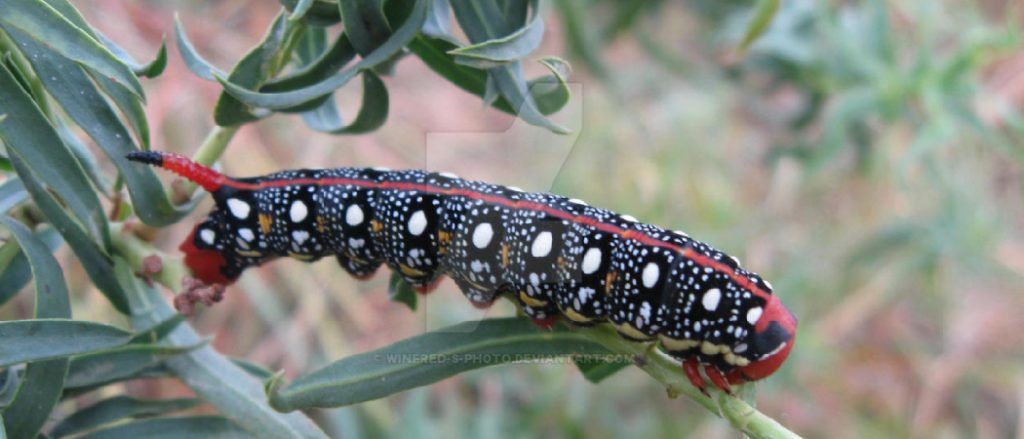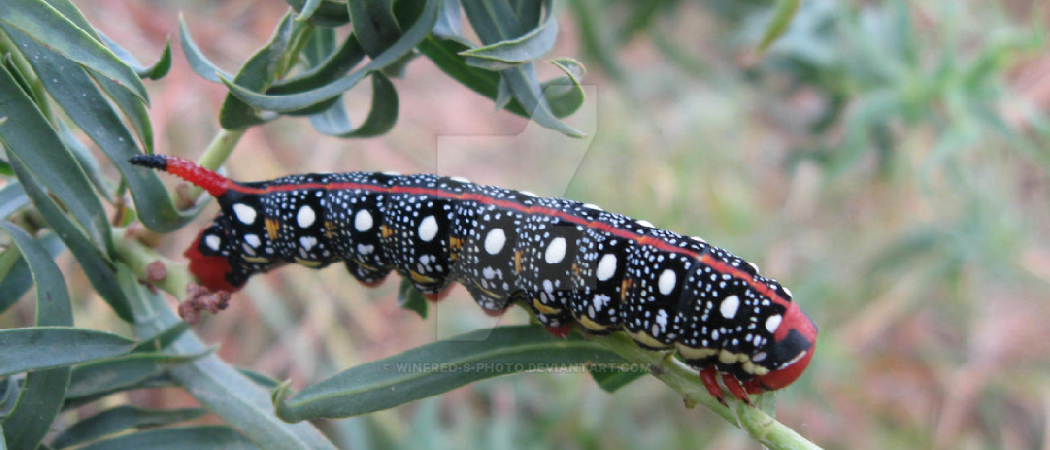Cats eat moths because they are instinctively drawn to their small and fluttering movements. Cats have a natural hunting instinct, and anything that moves quickly or unpredictably catches their attention.

This is why they often go after insects like moths, as their erratic flight patterns mimic the movements of prey animals. Additionally, moths are attracted to light sources, such as lamps or candles, which can make them an easy target for cats that spend time indoors.
While cats may not necessarily be interested in consuming the moth, they are likely to chase, play with, and ultimately catch it due to their innate predatory behavior. However, it’s important to note that not all cats are interested in hunting moths, as preferences may vary among individuals.

Credit: blog.catbandit.com
The Fascination With Moths
If you’ve ever observed a cat in action, you’ve probably witnessed their undying fascination with moths. It’s no secret that cats have an uncanny ability to spot these fluttering insects and immediately go into hunting mode. But why are cats so captivated by moths in the first place? In this article, we’ll explore the intriguing instinct and excitement behind a cat’s desire to hunt moths.
The Natural Instinct Of Predation
At the heart of a cat’s fascination with moths lies their inherent natural instinct of predation. Cats are natural-born predators, and this instinct is deeply ingrained in their DNA. In the wild, cats rely on hunting to survive, and their skills are finely tuned for capturing prey. This instinct remains alive in domestic cats as well, albeit in a more playful and instinctual manner.
When a cat spots a moth fluttering around, their predatory instincts kick in. The slightest movement of a moth triggers their hunting mode, and they can’t resist the urge to pounce on their flying target. This instinctive desire to chase and capture prey is what fuels a cat’s fascination with moths.
The Excitement Of Hunting
Another reason why cats find moths so captivating is the sheer excitement that comes with the hunt. Cats are highly skilled predators, and the thrill of the chase is deeply ingrained in their nature. When a cat spots a moth, it becomes a game of skill and agility. They stealthily track their elusive prey, using their keen senses to anticipate every move.
The excitement heightens as the cat gets closer to capturing the moth. They carefully stalk their target, honing in on the precise moment to strike. When the opportunity presents itself, the cat pounces, releasing all their pent-up energy in a burst of feline prowess. The chase and capture of a moth provide a sense of satisfaction and accomplishment for the cat, reinforcing their natural hunting instincts.
Furthermore, moths provide unique challenges for cats. Unlike other prey that may be slower or less elusive, moths are agile fliers, making them a worthy opponent for a cat’s hunting skills. The unpredictable flight patterns and rapid movements of moths add an extra level of excitement and challenge to the hunt, keeping cats engaged and intrigued.
In conclusion, the fascination that cats have with moths can be attributed to their natural instinct of predation and the excitement that comes with the hunt. Moths provide an ideal flying target for a cat’s predatory instincts, offering a thrilling challenge and an opportunity to showcase their hunting prowess. So, the next time you see your cat fixated on a moth, know that they are simply indulging in their innate nature as skilled hunters.

Credit: www.reddit.com
The Covert Skills Of A Cat
Cats exhibit their covert skills when it comes to catching and devouring moths. Their agile hunting techniques and keen eyesight make them efficient moth predators.
Have you ever observed your furry feline companion quietly stalking its prey, ready to pounce at a moment’s notice? Cats are stealthy and cunning hunters, with a set of covert skills that make them the perfect predators. From their highly developed senses to their agile and stealthy movements, their ability to catch and consume insects, such as moths, is truly mesmerizing. In this article, we will explore these covert skills of a cat, shedding light on why they are so successful at hunting down these fluttering creatures.
Highly Developed Senses
One of the key reasons why cats excel at catching moths is due to their highly developed senses. From their acute sense of hearing to their sharp vision, every aspect of their sensory system is finely tuned to detect even the slightest movements and sounds. Their large, forward-facing eyes provide them with exceptional depth perception and excellent night vision, allowing them to keep a watchful eye on their prey, even in low-light conditions. Their twitching ears are like radar, capable of capturing the faintest rustle of wings. Combine this with their sensitive whiskers, vibrating to detect even the tiniest vibrations in the air, and you have a combination of sensory abilities that make it nearly impossible for a moth to escape unnoticed and unscathed.
Agile And Stealthy Movements
A cat’s prowess in catching moths also lies in their agile and stealthy movements. With their muscular bodies and flexible joints, cats are natural-born athletes, capable of executing lightning-fast dashes, incredible leaps, and silent stalks. Their lithe frames and silent steps allow them to sneak up on their prey without making a sound, ensuring that the moth remains oblivious to the imminent danger it faces. The sleek, retractable claws they possess serve as deadly weapons, gripping and hooking the prey with precision and ease. It is these stealthy movements, combined with their lightning-quick reflexes, that give cats the upper hand when it comes to capturing moths, leaving these insects with little chance of survival.
In conclusion, the covert skills of a cat, including their highly developed senses and agile movements, provide the perfect recipe for successful moth hunting expeditions. The combination of acute hearing, sharp vision, sensitive whiskers, and silent, swift movements gives cats the advantage they need to effortlessly catch and devour these fluttering insects. So, the next time you see your furry friend leaping into the air to snatch a moth, marvel at their innate hunting abilities and applaud their mastery of the covert arts.
The Potential Risks And Solutions
As responsible cat owners, it’s important for us to understand the potential risks our furry friends face when they indulge in their natural instincts like chasing and munching on moths. While it may seem harmless, there are a few things to consider when it comes to this seemingly innocent behavior. In this section, we will delve into the potential dangers and provide some handy solutions to help you keep your feline friend safe and satisfied.
Ingestion Of Harmful Substances
One of the main concerns when cats eat moths is the potential ingestion of harmful substances. Moths can come into contact with pesticides, insecticides, or other toxins that might be present in our homes or surroundings. When a cat chomps down on a moth, it runs the risk of ingesting these dangerous substances along with it. These toxic chemicals can wreak havoc on their delicate digestive systems and may lead to a range of health issues.
To mitigate this risk, it is important to practice caution when using any kind of pest control products. Ensure that the products you use are pet-friendly and safe for your feline companion. Always read the labels and follow the instructions carefully. Additionally, consider exploring natural alternatives to keep moths at bay, such as lavender sachets or cedar chips, which are both effective and non-toxic options.
Precautions For Moth Control
Now that we’ve touched upon the potential dangers of cats eating moths, let’s discuss some precautions and solutions that can help mitigate this issue. By taking a few simple steps, you can create a safer environment for your cat while also managing the moth problem effectively.
1. Keep your home clean and well-sealed: Moths are often attracted to dirt, dust, and certain food items. Regularly vacuum, sweep, and mop to eliminate potential food sources and hiding spots for moths. Seal any cracks or openings in windows, doors, and walls to prevent them from entering your home.
2. Use moth repellents: Consider using moth repellents in areas where moths are commonly found, such as closets and storage spaces. Natural repellents like cedar blocks or mothballs can help deter moths without posing any harm to your cat.
3. Install screens: To prevent moths from entering your home while still enabling fresh air circulation, install screens on doors and windows. This simple measure can act as a barrier, reducing the likelihood of moths flying indoors and tempting your cat.
4. Redirect your cat’s attention: Cats are natural hunters, and their fascination with moths is simply a reflection of their instincts. To redirect their attention and discourage moth-hunting, engage your cat in interactive play sessions with toys specifically designed to mimic prey. This not only provides mental and physical stimulation but also helps satisfy their hunting instincts in a safe and controlled environment.
By implementing these precautions and solutions, you can minimize the potential risks associated with cats eating moths. Remember, understanding your cat’s behavior and taking proactive steps to ensure their safety is an integral part of being a responsible pet owner.

Credit: www.untamedcatfood.com
Frequently Asked Questions On Why Do Cats Eat Moths
Why Do Cats Eat Moths?
Cats are natural hunters and moths are small creatures that fly around, triggering their instinct to chase and catch them. Additionally, moths are attracted to light sources, which could make them an easy target for curious cats. Eating moths is also a way for cats to satisfy their predatory nature and get some exercise.
Conclusion
Cats’ fascination with moths is instinctual. Their predatory nature and excellent hunting skills are triggered by the fluttering movements and flimsy wings of moths. This behavior stems from their ancestors’ need to hunt for survival. So, if you’ve ever wondered why your feline friend gleefully chases and eats moths, it’s simply a manifestation of their natural instincts.

